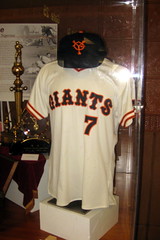Many people have never seen a cricket ball, so it is not surprising that most havenât the slightest idea what they look like, how theyâre made, things like that. This article will help fill in some of the blanks about this particular piece of cricket equipment, by answering the simplest of questions people might consider most interesting.
What are cricket balls made of?At its core, theyâre made from cork, which of course comes from a specific type of Oak tree. Much like an American baseball, balls are wound tightly around their circumference with string to a certain diameter, which in the menâs sporting events is between 224 and 229 millimeters. The balls must also weigh between 155.9 and 163.0 grams. These wound cores are then covered with four crescent-shapes strips of tanned leather which are sewn together at a seam along the ballâs middle. The balls are traditionally dyed red, except for one-day matches where night play makes a white ball more visible under the lights. Cricket balls are designed to last for at least 80 over, the equivalent of over 5 hours of play. Balls are only replaced during play under specific conditions according to league rules. These balls can be machine or hand-made, in either two or four pieces, though much of the wool yarn and cork comes from central locations like Portugal and Australia. Kookaburra, Slazenger, and Gray-Nicolls are major distributors of tournament-quality balls.
What is the âswingâ of a ball referring to?The unique construction and density of a cricket ball, in combination with a bowlerâs variety of delivery, the speed at which they throw, and the age of the ball in play determine a ballâs âswing,â i.e. its horizontal deviation from side to side after it leaves a bowlerâs hand. All these variables contribute something similar to, but yet different from, the curve of a baseball when released by a pitcher.
For a better understanding of the difference between the two, you can consult a scientific discussion of the Magnus Effect online. Bowlers use the seams on a cricket ball to create âspinâ on deliveries. Is there a difference between hand-made and machine-made balls?At least one study completed in November 2008 suggests that all balls are not made alike, a factor that contributes to inconsistency in play. Softer balls that are more forgiving can be placed more easily by batters. More runs are possible as these balls break down over a few hours, enough time for a significant amount of runs to be scored by less skilled players. The use of different core materials (rubber and cork, or a mixture of the two, for example) and different specifications for the surface finishes and yarn highlights the need for better standards. The official committees of ICC tournament play will need a closer look, as tampering and inferior quality are still issues that occasionally become a focal point for cricket balls.
For More Free Information visit Rugby League Merchandise
Tom Miller
Lifestyle and Internet Marketing Conslutant
Tom Miller
Internet B2B Marketing
http://personaldevelopmentplanning.com
Article from articlesbase.com

